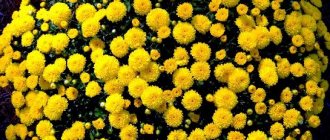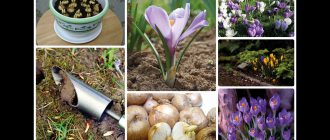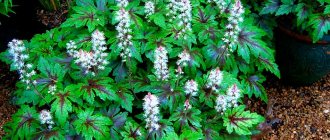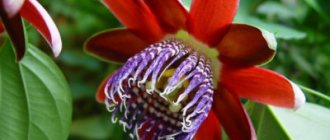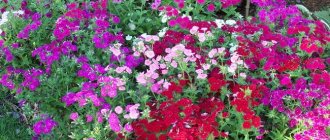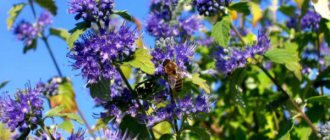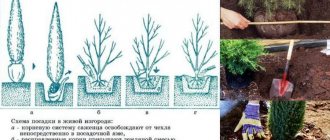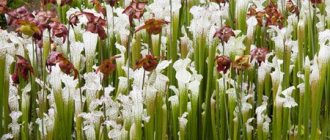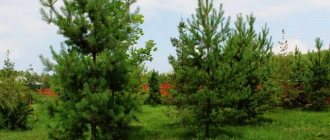Among the many cultivated conifers, the highly decorative and easy-to-care yew, a small tree or shrub known for its durability, occupies a worthy place. Some of the oldest European specimens are over 1,500 years old!
In ancient times, it was believed that trees brought death and even being in their shade was dangerous. According to Pliny, a tragic end threatened anyone who drank wine from a yew cup.
And such a warning is justified, since all parts of the tree, with the exception of the fleshy shells of the berries that hide the seeds, contain poisonous compounds.
The crop is lethal not only for people, but also for many domestic animals, for example, a lethal dose for a horse is just a few twigs, and for a person – a few seeds. Symptoms of poisoning: dry mouth, vomiting, dizziness, abdominal pain, shortness of breath, arrhythmia, hypotension and loss of consciousness. The plant is harmless to wild animals.
Planting and caring for yew
- Planting: during the period from late August to October.
- Lighting: bright sunlight.
- Soil: well-drained, fertile, but can also grow on poor soils. Soils that are too acidic or too wet are not suitable for the plant.
- Watering: regular - once a month with a water consumption of 1-1.5 buckets - only for plants up to three years old. Mature yew trees need regular watering only during periods of prolonged drought. In the evenings in the heat, it is advisable to sprinkle the crown.
- Feeding: once a year with a solution of complex mineral fertilizer.
- Pruning: since yew grows slowly, it will be necessary to form its crown already in adulthood, but it is undesirable to trim the shoots by more than a third of the length. Pruning is carried out in early April, before the buds open on the trees.
- Reproduction: seeds and cuttings.
- Pests: yew false scale insects, gall midges, pine cutworms and spruce needle-eating budworms.
- Diseases: brown schutte, fomoz, necrosis and fusarium.
- Properties: all plant organs contain poison.
Read more about growing yew below.
Formation
Yew easily tolerates pruning. The stump left from a cut down tree becomes overgrown with growth over time. Yew hedges and screens become dense if they are regularly shaped.
Balls, cubes, pyramids and intricate shapes are cut out of the dense crown of coniferous trees. These figures last a long time because... Yew grows very slowly. You need to form the crown skillfully, because... any error will be noticeable for a long time.
Read also: Cineraria: flowers for the home and borders
Only masters can shape yew this way
I like to shape the crowns of a wide variety of trees and shrubs and decorate the area with garden bonsai. But our yew, which is about fifteen years old, grows freely. I am still hesitant to pick up a pruner to remove some of its luxurious dark green branches.
Botanical description
The genus Yew is represented by dioecious plants. The bark of the yew is scaly, red-brown, the crown is ovoid-cylindrical, often multi-vertexed. Yew branches are located on the trunk in a whorled pattern. Dark green, soft and flat needles are arranged spirally on the shoots, and in two rows on the side branches. The length of the needles is from 2 to 3.5 cm. On female trees, red berries are formed that do not fall off until winter. Shrub yew rarely grows above 10 meters, while the height of tree yew can reach 20-30 meters or more, and the diameter of its trunk is 4 m. Yew wood has bactericidal properties due to the large amount of phytoncides it contains: if the floors in the house or the furniture is made of yew, then the home is reliably protected from infections. It was the hunt for high-quality, hard yew wood, which is popularly called “non-wood,” that was the reason that today yew is listed in the Red Book.
Yew trees live up to 3000 years, and their amazing ability to quickly recover after pruning allows you to create various shapes from the crowns of plants, which explains the high popularity of yew in garden culture. In terms of shade tolerance, yew has no equal among trees, although it grows well in lighted places. However, you should know that all yew organs are poisonous.
Planting yew
When to plant
Yew is planted in the garden from late August to October. If you live in a region with a warm climate, then plant yew in October, where it is convenient for you, but if summer is short in your area, it is better to grow yew in a sunny place and plant in late summer or early autumn. Seedlings with a closed root system can be planted throughout the growing season, but no later than October in warm regions and early-mid September in areas with early and cold winters.
- Spirea pruning
In the photo: Tis
The yew plant should be protected from drafts at least in the first years of its life. Yew prefers fertile, light and well-drained soil, for example, a mixture of two parts peat, two parts sand and three parts turf or leaf soil. However, it can also grow on poor soils. The plant does not tolerate soil that is too acidic or too wet.
How to plant
The pit for a yew seedling should be at least 70 cm deep and 20 cm wide than the root ball. It is more convenient to plant a yew hedge in a trench 50-70 cm deep. The distance between two yew trees should be from 1.5 to 2 m, and seedlings in the hedge are placed at intervals of at least half a meter.
Before planting yew, a layer of drainage material about 20 cm thick should be laid at the bottom of the hole. River sand, broken brick, pebbles or crushed stone are used as drainage. Then the pre-watered seedling is carefully removed from the container, lowered into the pit and the free space is filled with soil of the composition we described, mixed with complex mineral fertilizer. This can be Kemira-universal, 100 g of which is added to each m² of soil, or Nitroammofoska, which needs 1 g for each liter of substrate, or copper sulfate at the rate of 15 g for the same amount of soil mixture. As a result of planting, the root collar of the seedling should be at surface level. After planting, the soil around the seedling is compacted and watered abundantly, and when the water is completely absorbed, the tree trunk circle is mulched with compost or peat.
Growing yew: where is the best place to plant the plant
The main advantage of yew is its ease of care and planting. However, you need to remember that the negative factors for the tree are:
- water stagnation;
- strong winds;
- acidic soils;
- gas contamination (for some species);
- prolonged droughts;
- dry air.
Climatic conditions for growing
Since in the wild, yew grows in warm climates, when planting in open ground at the dacha, it is better to choose a well-lit place for it. However, if there is no such area or you have planned a shaded area for the shrub, the yew will grow there too, although it will slightly lose its decorativeness and growth. At the same time, growing in the shade of other trees, yew tolerates frost better.
It is also advisable that the planting site be protected from drafts. It is important to know that not all types of this tree are suitable for landscaping city parks and squares, since they do not tolerate polluted air.
Soil selection
The shrub prefers fertile, light soil with good drainage. The optimal soil composition is considered to be: sand, peat, leaf or turf soil (2:2:3). It is good to add forest coniferous soil when planting. Although we note that yew also survives in poor soils, the only thing it does not tolerate is soils with high acidity and humidity.
Yew berry feels good in areas where the soil is alkaline or slightly acidic; it does not grow well on land with excess moisture. The Canadian species also prefers slightly acidic soils. Pointed yew does not tolerate acidic soils. And the most unpretentious when choosing land is a hybrid of berry and pointed species - the medium yew. It grows well in slightly alkaline and neutral soils.
Caring for yew in the garden
Growing conditions
Planting and caring for yew is not difficult. Yew needs to be watered, its tree trunk area kept clean and loosened regularly. Young plants need to be covered for the winter and protected from sunburn in the spring. It is also advisable to carry out preventive measures to protect yew from pests and diseases. As the yew matures, it may require pruning.
How to grow other conifers, such as pine
Only yew trees under three years old need regular watering: the soil in their tree trunk circle is moistened once a month, spending a bucket and a half of water on each plant. Adult yews practically do not need watering; usually natural precipitation is enough for them. In addition, they can extract moisture from deep in the soil with their powerful roots. But it will be easier for yews to survive a prolonged drought with regular watering and sprinkling of the crown. The wet soil around the tree trunk needs to be loosened to a depth of 10-15 cm, especially in the first three years after planting, otherwise a crust will form on the soil, preventing oxygen from reaching the roots. Simultaneously with loosening, weeds should be removed, on which harmful insects often settle. To make your work easier, mulch the tree trunk circle with a layer of peat, pine needles or sawdust 8-10 cm thick.
In the photo: Yew berries on a branch
If you added fertilizer to the soil when planting the yew tree, it will last for the whole year. In the future, fertilizers are applied annually. You can use the same Nitroammofoska in the amount of 50-70 g per m² or Kemiru-universal - 100 g/m².
- Astrantia: growing from seeds, types and varieties
Yew grows very slowly, so in the first years the plant does not need pruning. Mature trees and bushes are easy to form a crown; they tolerate even heavy pruning, but still try to shorten the shoots by no more than a third of the length. Dry, diseased, frostbitten branches must be removed completely. It is best to prune in early April, before the buds swell.
Pests and diseases
As for pests, sucking insects pose a danger to yew: yew false scale insects and gall midges, and among the pine-eating pests, pine cutworm and spruce needle-eater can annoy the yew. As a result of the activity of pests, the yew turns yellow, its needles and branches dry out and fall off. Make it a rule every year in the spring, before the sap begins to flow, to treat the yew and its tree trunk with a solution of Karbofos or Nitrafen. If you find pests on yew during the growing season, spray the plant and the surface of the soil underneath it two or three times with Rogor or another preparation of similar action. However, it is unlikely that you will be able to get rid of insects in one session, so be prepared to spray the yew with insecticide again in 10-12 days.
Among the diseases that affect the yew are brown scute, fomosis, necrosis and fusarium. They manifest themselves in different ways, but you should be alerted to any change in the appearance of the needles. The main reason for the development of diseases is mechanical damage to the yew bark, which opens the way for fungal infections. Diseases occur when yew is grown in low areas, in heavy clay soils. To improve drainage and remove excess moisture from the root area, drive several pieces of plastic pipe up to 30 cm long into the soil around the perimeter of the trunk circle of the diseased plant, and treat the yew itself with a biofungicide. As a preventative measure, treat yew with copper-containing fungicides every spring and every autumn.
How to plant and grow spruce in the garden
Transfer
It is best to replant yew in the spring, when the soil has warmed up. Choose a suitable location, prepare a planting hole of the required size, as described in our article, dig up the yew, move it to a new location, place it in the pit so that the root collar is level with the surface, and complete planting. Be sure to then water the soil around the tree trunk and mulch the surface around the plant with organic material.
Care instructions
As a rule, there is no need to water the yew, but if there is severe drought, water the conifer about once every two weeks. To this end, warm up the water and use it to irrigate the entire plant, starting from its crown.
The procedure should be performed in the evenings. Also an important part of care is periodic loosening of the soil under trees and bushes. Don’t forget about feeding the yew. It needs annual application of mineral and organic fertilizers. In the spring, after digging, you need to add humus or compost so that the added substances can penetrate the root system as much as possible. But in the summer you need to fertilize the tree twice with mullein solution.
In winter, it is recommended to insulate the yew root system by adding peat or leaves, which will need to be dug up in the spring. But this is not necessary, since most varieties of this crop can tolerate winter and frosts down to 25 degrees.
We must not forget about regular pruning of trees and bushes. This is not particularly difficult, since the first 5-7 years of life development occurs quite slowly. However, already from the first year of growth it is necessary to form a crown as part of its care . To enhance branching , you need to trim the upper parts of the shoot. In order for the crown to be thick, this must be done on a regular basis. But be sure to take into account the characteristics of the yew variety. When you want to prune a 3-4 year old plant, be sure to study the description of the variety and the requirements for caring for it.
Yew propagation
Reproduction methods
Yew is propagated by seeds and cuttings. Seed propagation is more labor-intensive and takes much longer than vegetative methods, and its results are unpredictable, since the generative method does not always preserve the varietal characteristics of the parents. Therefore, seed propagation is used to obtain species of yews and to breed new plant varieties. Propagating yew by cuttings is faster and more reliable, and most importantly, young plants completely inherit the varietal characteristics of the mother tree.
In the photo: Branch of yew berry
Yew is also propagated by grafting, but this is best done by specialists.
Propagation by cuttings
For cuttings you will need sections of three to five year old shoots 15-20 cm long. They are harvested in September-October or April-May. The lower part of the cuttings is cleared of needles, and the cut is treated with a growth stimulator, after which the cuttings are planted in tubs filled with a substrate of one part sand and two parts peat. If the procedure is carried out in the fall, then the cuttings are kept warm all winter and planted in the garden in the spring. If cuttings are carried out in the spring, then you can first plant the cuttings in a greenhouse under a film, and when their roots grow, they are transplanted into the garden. Rooting lasts 3-4 months, and all this time the substrate should be slightly moist. Remove the covering from the cuttings only at the end of summer so that they have time to get used to the garden before the cold weather. For the first three years, seedlings are covered for the winter so as not to expose their root system to the danger of frostbite.
- White flower: cultivation and care, types and varieties
Conditions for growing juniper on the site
Growing from seeds
When properly stored, yew seeds remain viable for up to four years. It is best to sow in the fall, immediately after collecting the seeds. If you are going to sow yew in the spring, then you will have to keep its seeds in the refrigerator at a temperature of 3-5 ºC for at least six months. This measure will ensure higher germination. In March, the seeds are sown in a sterile substrate to a depth of 5 mm, covered with film and placed in a warm place. Seed germination lasts at least two months, and if you used unstratified seed for sowing, then you will have to wait from one to three years for germination. Two years after the emergence of seedlings, they are planted in a garden bed in a greenhouse, and after another two years, the seedlings are planted in a schoolhouse, where they will grow for another 3-4 years before being transplanted to a permanent place.
Yew on the site in winter
Autumn work
After the end of leaf fall, carry out preventive treatment of yew against diseases and pests with a fungicide solution, and cover the trunk circles of yew trees that have not reached three years of age with a layer of peat or dry leaves of decorative species 5-7 cm thick. To prevent the fragile branches of young yews from breaking under the weight of snow, pull them carefully towards the trunk and tie them into a bun.
In the photo: Yew branch
Wintering yew in the garden
If a snowless winter is predicted, the yew may freeze from severe frost, so it is wrapped in spunbond or lutrasil, but this must be done using a frame so that there is space between the plant and the covering material. It is better not to use burlap to create a shelter, since it can get wet during thaws and then freeze in the cold. It is also undesirable to wrap yew trees with polyethylene and roofing felt, which do not allow air to pass through to the branches. When the soil warms up in the spring, the shelter is removed, but until fresh growth appears on the yew, it must be protected from sunlight, which at this time of year poses a serious danger to coniferous plants: in sunny and windy weather, when the roots of the yew not yet able to absorb moisture, and the needles evaporate it intensively, yew trees can be easily damaged. Therefore, trees should be shaded from the bright sun.
Types and varieties
We offer you a description of the most commonly cultivated yew species.
Canadian yew (Taxus canadensis)
A bushy, recumbent tree no more than 2 m high, native to the forests of eastern North America. Its branches are ascending, the shoots are densely leafy and short. The needles of the Canadian yew are sickle-shaped and sharply pointed. The needles are yellowish-green above, light green below with even lighter stripes. The species is characterized by high winter hardiness: it can withstand frosts down to – 35 ºC, however, this quality appears in the plant only after it reaches three years of age. Of interest are the following forms:
- Aurea is a densely branching dwarf shrub up to 1 m high with small yellow needles;
- Pyramidalis is a low-growing form in which at a young age the crown has a pyramidal shape, and later becomes looser.
In the photo: Canadian yew (Taxus canadensis)
Pointed yew (Taxus cuspidata)
A protected species native to the Far East, Korea, Japan and Manchuria. The tree can reach a height of 20 m, but on average grows up to 7 m. Sometimes the pointed yew has the form of a bush up to 1.5 m high. The crown of the plant is oval or irregular, the branches are located horizontally, young shoots and petioles have a yellowish tint, especially strong from the bottom side. The leaves of plants of this species are wide, sickle-shaped, with a protruding midrib. Above they are dark green to almost black, below the needles are of a lighter shade. Oval, pointed, slightly flattened seeds are surrounded by a pink or reddish fleshy amyelium up to half the length. The species has high winter hardiness, but in its young years it requires protection from the cold for the winter. The following decorative forms of pointed yew are popular:
- Rustique is a plant with a wide loose crown, long rising dark brown striped branches and slightly sickle-shaped, sparse, dark green above and yellowish below needles;
- Nana is a low yew up to 1 m high with spread out strong branches and an irregularly shaped crown. The needles are linear, very thick, dark green, up to 2.5 cm long;
- Minima is the shortest form of the species, reaching a height of no more than 30 cm. Its shoots are brown, the needles are dark green, oblong-lanceolate, shiny;
- Farmen is a dwarf plant up to 2 m high with a crown diameter of up to 3.5 m. The bark is red-brown with light spots, the needles are pointed, dark green, located radially;
- Kapitata - has female and male forms. The crown of this yew, which may have one or several trunks, is strictly pin-shaped;
- Columnaris - wide-columnar form with dark needles;
- Dansa is a female form with a very compressed wide crown: at the age of fifty the plant reaches a height of 120 cm with a crown diameter of 6 m. The needles are dark green;
- Expansa is a vase-shaped plant without a central trunk. By the age of twenty it reaches a width and height of about 3 m. A very popular plant in the USA.
In the photo: Pointed yew (Taxus cuspidata)
Short-leaved yew (Taxus brevifolia = Taxus baccata var. brevifolia)
Originates from western North America. This is a tree from 15 to 25 m high or a bush up to 5 m high with a wide pin-shaped crown and bark peeling off in pieces. Thin branches are spaced straight from the trunk, the branches hang slightly; yellow-green, sharply pointed needles up to 2 cm long and up to 2 mm wide, arranged in two rows. The two-to-tetrahedral, ovoid seeds, up to 5 mm long, are encased in bright red arils.
In the photo: Short-leaved yew (Taxus brevifolia = Taxus baccata var. brevifolia)
Yew berry (Taxus baccata)
This species is common in Western Europe, Asia Minor and the Caucasus in mountain forests on sandy and even swampy soil. The height of the yew berry can reach from 17 to 27 m. It has a very dense spreading crown of an ovoid-cylindrical shape, sometimes multi-peaked. The ribbed trunk is covered with reddish-gray bark, which peels off in plates with age. The arrangement of the needles is spiral, on the side branches - two-row. The needles are flat, dark green and shiny above, matte below, yellow-green in color. The seeds are enclosed in bright red arils. This species has a large number of popular garden forms, for which a classification has been compiled. The most commonly grown garden forms of the species are:
- Compacta is a dwarf form slightly taller than 1 m with a rounded crown of the same diameter and branches evenly spaced from the trunk. The needles are sickle-shaped, dark green and shiny above, slightly lighter below;
- Erecta is a male shrub up to 8 m high with a wide crown and grey-green, short and thin needles;
- Fastigiata is a female form up to 5 m high with a wide columnar crown, drooping top and numerous sharp ascending branches. The needles are black-green, curved inward, arranged spirally on the shoots;
- Nissens Corona is a shrub up to 2.5 m high and a crown diameter of 6-8 m, but in the middle zone this yew does not grow above the level of snow cover. The bark is red-brown, thin, the needles are bright green, needle-shaped;
- Repandence is a creeping bush up to 50 cm high and up to 5 m wide with horizontally spaced branches pressed to the ground and sickle-shaped, shiny, dark green-bluish needles on the upper side. The underside of the needles is flat and lighter in color. The variety is winter hardy, so it is very popular;
- Summergold is a bush with a wide and flat crown, with branches rising obliquely, crescent-shaped needles up to 3 cm long and up to 3 mm wide with a wide yellow-golden edge.
In the photo: Yew berry (Taxus baccata)
Medium yew (Taxus media)
Occupies an intermediate position between pointed yew and yew berry. It is taller than the berry yew, its old branches are olive green, but in the sun they take on a reddish tint. The shoots are ascending, the needles are needle-shaped, arranged in two rows, with a pronounced central vein, up to 27 mm long and up to 3 mm wide. The species is drought-resistant and frost-resistant, easily propagated by seeds and has many decorative forms:
- Densiformis is a female plant up to one and a half meters high and a thick rounded crown up to 3 m in diameter. The needles are needle-shaped, thin, sharp, light green in color, up to 22 mm long and up to 3 mm wide;
- Grandifolia is a squat plant with large dark green needles up to 30 mm long and up to 3 mm wide;
- Straight Hedge is a female shrub up to 5 m high. The diameter of the dense, narrow columnar crown reaches one and a half meters. The needles are curved, double-lined, thick, dark green;
- Ward is a female plant with a flat-rounded crown, reaching 2 m in height and 6 m in width. The needles are dark green, standing very densely;
- Sabien is a male, slow-growing shrub with a wide crown and a flat top, reaching a height of 1.8 m and a width of 4 m in 20 years.
In the photo: Medium yew (Taxus media)
Short-leaved yew (Taxus brevifolia)
It grows along the banks of streams and rivers, mountain slopes, and gorges in the western part of North America. It can be a bush up to 5 m high or a tree reaching 25 m in height. It grows very slowly. Its crown is broadly pin-shaped, the bark comes off the trunk in plates, the branches are straight away from the trunk, the branches hang down slightly. The needles are needle-shaped, two-row, yellow-green, up to 20 mm long, up to 2 mm wide.
In the photo: short-leaved yew (Taxus brevifolia)
Other natural and hybrid forms of yew are also grown in cultivation.
Varieties popular in the Moscow region
- Adpressa golden is a low-growing variety of yew berry, reaching only a meter in height at the age of 10 years. The needles of the plant are colored golden-greenish. Planted on alpine hills and as a border plant. The perennial is demanding of good lighting.
- Fastigiata is a pyramidal plant; in adulthood it can reach 6 m. It grows slowly and needs shelter for the winter. It has golden colored needles.
- By its 10th anniversary, Elegantissima reaches a height of 100 cm and a diameter of up to 150 cm. The branches are densely covered with greenish-white needles. Yew of this variety is winter-hardy, tolerates shade, and does not require special care.
- Samergold is an unpretentious variety that forms a compact spherical bush, no more than a meter high. The needles are small, thick, golden in color.
- David - forms vertical bushes, up to 2 m in height and 70 cm in diameter. The color of the needles is light green, with a yellowish tint. The plant is actively used to form hedges.
- Repandes forms a lush, spreading bush, densely covered with yellow-green needles. It produces an increase of 8–10 cm per year, and in adulthood the height reaches 4 m. Ephedra is light-loving.
Read also: What to plant along the fence at the dacha: trees, bushes, plants, compositions in the photo

